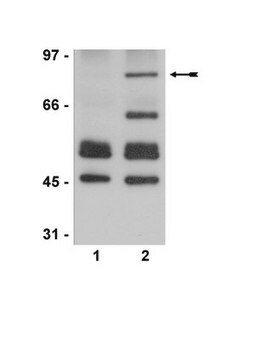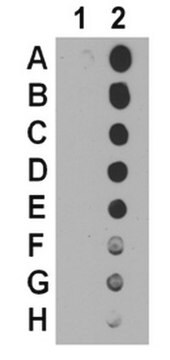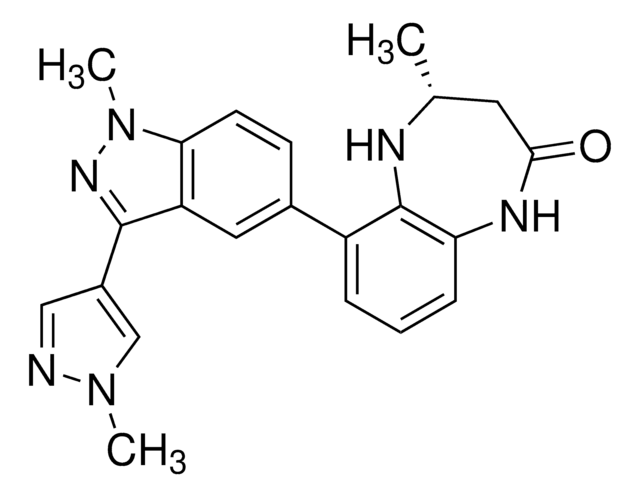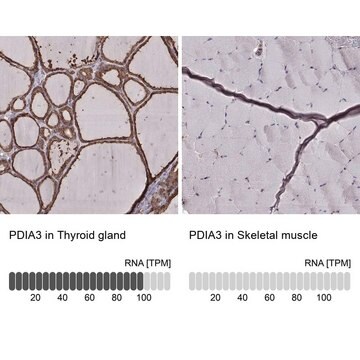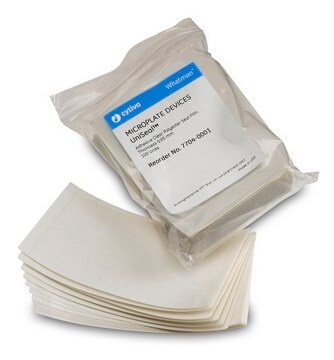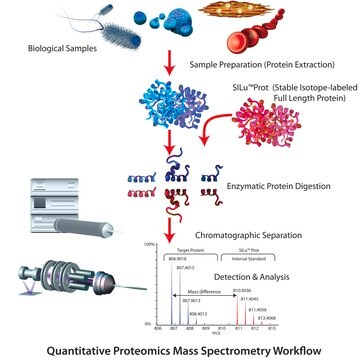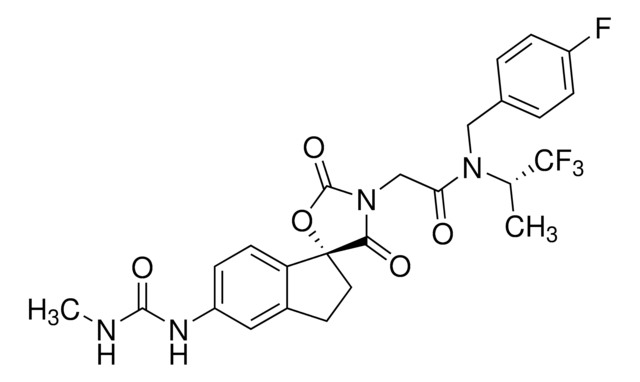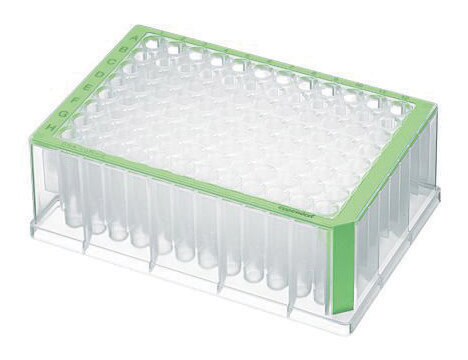06-1283
Anti-acetyl-p53 (Lys320) Antibody
from rabbit, purified by affinity chromatography
别名:
Antigen NY-CO-13, Phosphoprotein p53, Tumor suppressor p53, p53 antigen, p53 transformation suppressor, p53 tumor suppressor, transformation-related protein 53, tumor protein p53
登录查看公司和协议定价
所有图片(2)
About This Item
分類程式碼代碼:
12352203
eCl@ss:
32160702
NACRES:
NA.41
推荐产品
生物源
rabbit
品質等級
抗體表格
affinity isolated antibody
抗體產品種類
primary antibodies
無性繁殖
polyclonal
純化經由
affinity chromatography
物種活性
human
物種活性(以同源性預測)
bovine (based on 100% sequence homology), chimpanzee (based on 100% sequence homology)
技術
western blot: suitable
NCBI登錄號
UniProt登錄號
運輸包裝
wet ice
目標翻譯後修改
acetylation (Lys320)
基因資訊
human ... TP53(7157)
一般說明
p53 was discovered in 1979 as a cellular protein associating with the transforming protein of SV40 tumor virus. Since then, many different biochemical functions have been attributed to the 53 kD phosphoprotein. Experimental evidence has suggested that p53 acts as a negative regulator of cell growth in normal cells (Finlay, 1989). Thus, the inactivation or mutation of p53 may be an essential step in the development of malignancy (Lane and Benchmol, 1990). Wild-type p53 levels in normal cells and tissues were found to be very low. Mutant p53 polypeptide, however, is often found to be present at high concentrations in mammalian tumors and tumor cell lines. For example, in an immuno-histochemistry study 40% of human breast cancer showed elevated levels of mutant p53 in the cell nucleus. Mutations of the p53 protein have some characteristic features:
a) Most of them are missense point mutations giving rise to an altered protein function.
b) Many -but not all- mutant p53 proteins exhibit a common mutant structure, which can be recognized by monoclonal antibodies specific for p53 in the mutant conformation.
a) Most of them are missense point mutations giving rise to an altered protein function.
b) Many -but not all- mutant p53 proteins exhibit a common mutant structure, which can be recognized by monoclonal antibodies specific for p53 in the mutant conformation.
特異性
This antibody recognizes p53 acetylated at Lys320.
免疫原
Epitope: Acetyl Lys 320
KLH-conjugated linear peptide corresponding to p53 at Lys320.
應用
Research Category
Epigenetics & Nuclear Function
Epigenetics & Nuclear Function
Research Sub Category
Transcription Factors
Transcription Factors
Use Anti-acetyl-p53 (Lys320) Antibody (Rabbit Polyclonal Antibody) validated in WB to detect acetyl-p53 (Lys320) also known as Antigen NY-CO-13, Phosphoprotein p53, Tumor suppressor p53, p53 antigen.
Western Blot Analysis: 5 µg/mL antibody detected p53 on 10 µg of A549 cells treated with UV & TSA lysate.
Western Blot (SNAP ID) Analysis: 5 µg/mL antibody detected p53 on 10 µg of recombinant proteins.
Western Blot (SNAP ID) Analysis: 5 µg/mL antibody detected p53 on 10 µg of recombinant proteins.
品質
Evaluated by Western Blotting using A549 cells treated with UV & TSA.
Western Blotting Analysis: 5 µg/mL of a representative lot of this antibody detected p53 on 10 µg of A549 cells treated with UV & TSA lysate.
Western Blotting Analysis: 5 µg/mL of a representative lot of this antibody detected p53 on 10 µg of A549 cells treated with UV & TSA lysate.
標靶描述
~ 53 kDa observed. Western Blot of A549 cells treated with UV & TSA show bands at ~48 kDa and ~14 kDa which are likely breakdown products of p53 reported for UV treated cells. (Sadji-Ouatas, 2002)
聯結
Replaces: 06-915
外觀
Affinity purified
Purified rabbit polyclonal in buffer containing 0.1 M Tris-Glycine (pH 7.4), 150 mM NaCl with 0.05% sodium azide.
儲存和穩定性
Stable for 1 year at 2-8°C from date of receipt.
分析報告
Control
Recombinant proteins
Recombinant proteins
其他說明
Concentration: Please refer to the Certificate of Analysis for the lot-specific concentration.
免責聲明
Unless otherwise stated in our catalog or other company documentation accompanying the product(s), our products are intended for research use only and are not to be used for any other purpose, which includes but is not limited to, unauthorized commercial uses, in vitro diagnostic uses, ex vivo or in vivo therapeutic uses or any type of consumption or application to humans or animals.
未找到合适的产品?
试试我们的产品选型工具.
儲存類別代碼
12 - Non Combustible Liquids
水污染物質分類(WGK)
WGK 1
閃點(°F)
Not applicable
閃點(°C)
Not applicable
Hyo-Kyoung Choi et al.
Human molecular genetics, 24(4), 1127-1141 (2014-10-12)
Deciphering the molecular basis of neuronal cell death is a central issue in the etiology of neurodegenerative diseases, such as Parkinson's and Alzheimer's. Dysregulation of p53 levels has been implicated in neuronal apoptosis. The role of histone deacetylase 3 (HDAC3)
Shunsheng Zheng et al.
Cancer research, 77(16), 4342-4354 (2017-06-29)
Chemotoxicity due to unwanted p53 activation in the bone marrow remains an unmet clinical challenge. Doxorubicin, a first-line chemotherapy drug, often causes myelosuppression in patients, thus limiting its effectiveness. In this study, we discovered that C646, a reversible p300 inhibitor
Zhi Wen et al.
Molecular and cellular biology, 32(1), 26-35 (2011-10-26)
Since inactivation of tumor suppressor p53 functions is one of the most common features of human cancer cells, restoring p53 expression and activity is an important focus in cancer therapy. Here we report identification of photoreceptor-specific nuclear receptor (PNR)/NR2E3 as
Lu Yang et al.
Communications biology, 4(1), 1373-1373 (2021-12-10)
Tumor suppressor p53, a critical regulator of cell fate, is frequently mutated in cancer. Mutation of p53 abolishes its tumor-suppressing functions or endows oncogenic functions. We recently found that p53 binds via its proline-rich domain to peptidase D (PEPD) and
Stephanie A Luff et al.
PloS one, 13(9), e0203991-e0203991 (2018-09-20)
Megakaryocytes (Mks) derive from hematopoietic stem and progenitor cells (HSPCs) in the bone marrow and develop into large, polyploid cells that eventually give rise to platelets. As Mks mature, they migrate from the bone marrow niche into the vasculature, where
我们的科学家团队拥有各种研究领域经验,包括生命科学、材料科学、化学合成、色谱、分析及许多其他领域.
联系技术服务部门